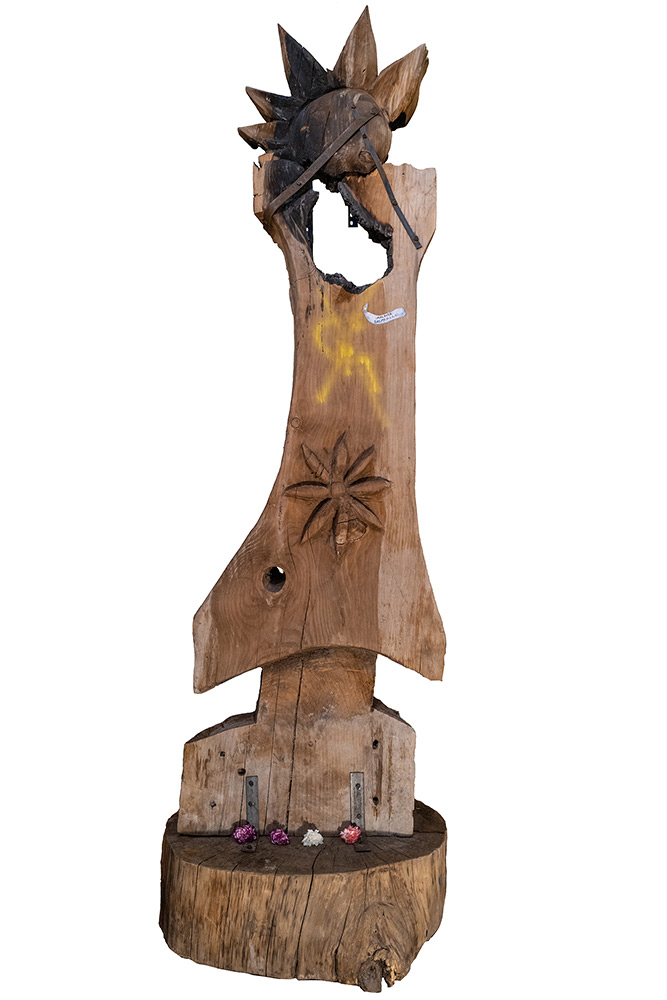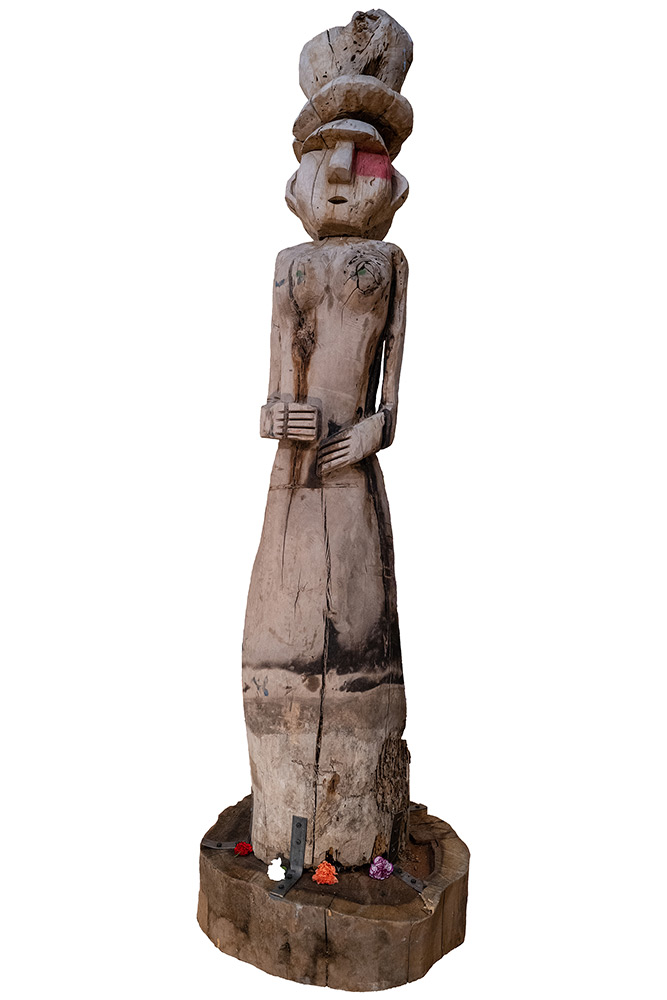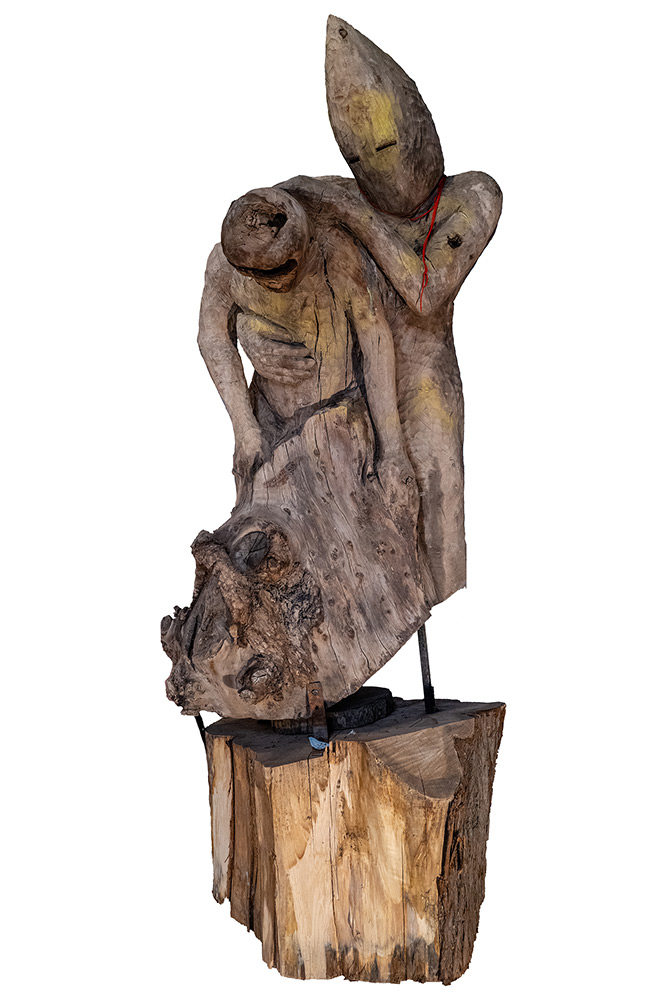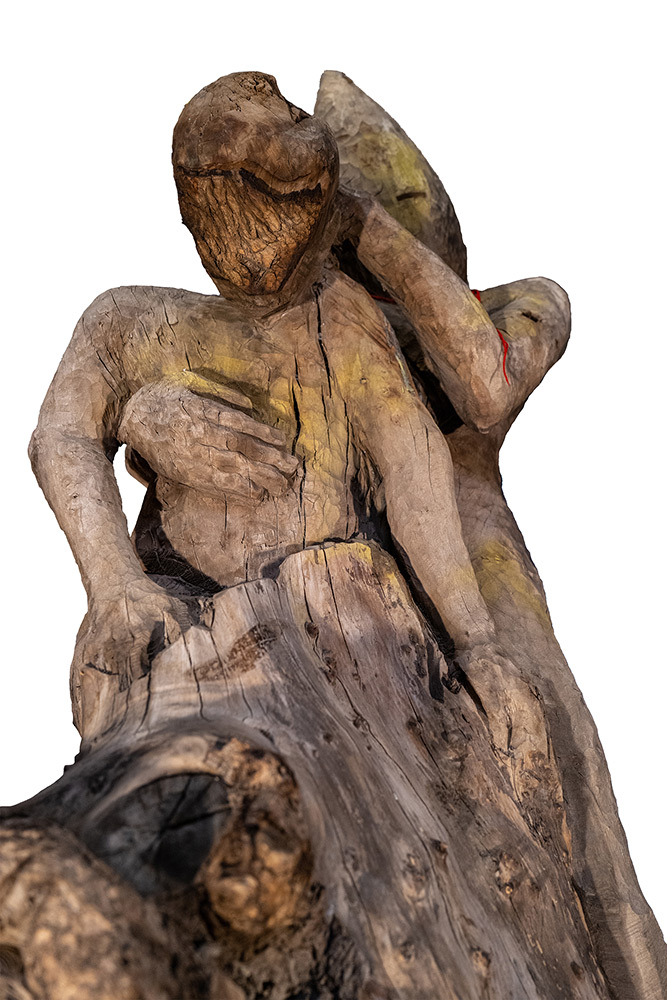A set of totems made by Colectivo Originario, a wood carving workshop led by Machupe sculptor Antonio Paillafil.
Each of these protective totems represent a specific territory in the country, illustrating their Amerindian culture: Petroglif, a Diaguita shaman from Tilama; Domomamüll, or wooden woman in Mapudungun, shows a chemamüll Mapuche sculpture; and the Selk´Nam Spirit, the incarnation of the peoples from Tierra del Fuego. Their purpose was to make indigenous peoples visible and to promote the creation of a plurinational state to grant them sovereignty.

The first sculpture –which still has visible marks of having been burned– portrays the shaman from Tilama, based on the Diaguita petroglyph in the north (Norte Chico). The totem is composed of three main elements: its head represents the Sun deity Inti, its heart represents a spiritual portal, and its abdomen represents a flower, a symbol of fertility.

Domomamüll –domo: woman; and mamüll: wood– represents the feminine essence, which links nature and farming. Its meaning foregrounds the symbolic essence of the feminine and its strength. It is this energy that connects us with Nature and allows us to live harmoniously in it; it helps us to be reborn, create meaningful familial bonds, and become better people. That is the symbolism that matters.

The Selk’Nam Spirit is not an indigenous totem, but it was included as a way to represent the people from the furthest south and to visualize the genocide they were subjected to. They belong to the history we cannot forget, and the sculpture challenges us not to deny the past and to honour and acknowledge our origins, practices that must be present in our education.
These sculptures were installed and remained at Plaza Dignidad for many months. They were the epicentre of various rogations and encounters to vindicate the role of our indigenous communities.
